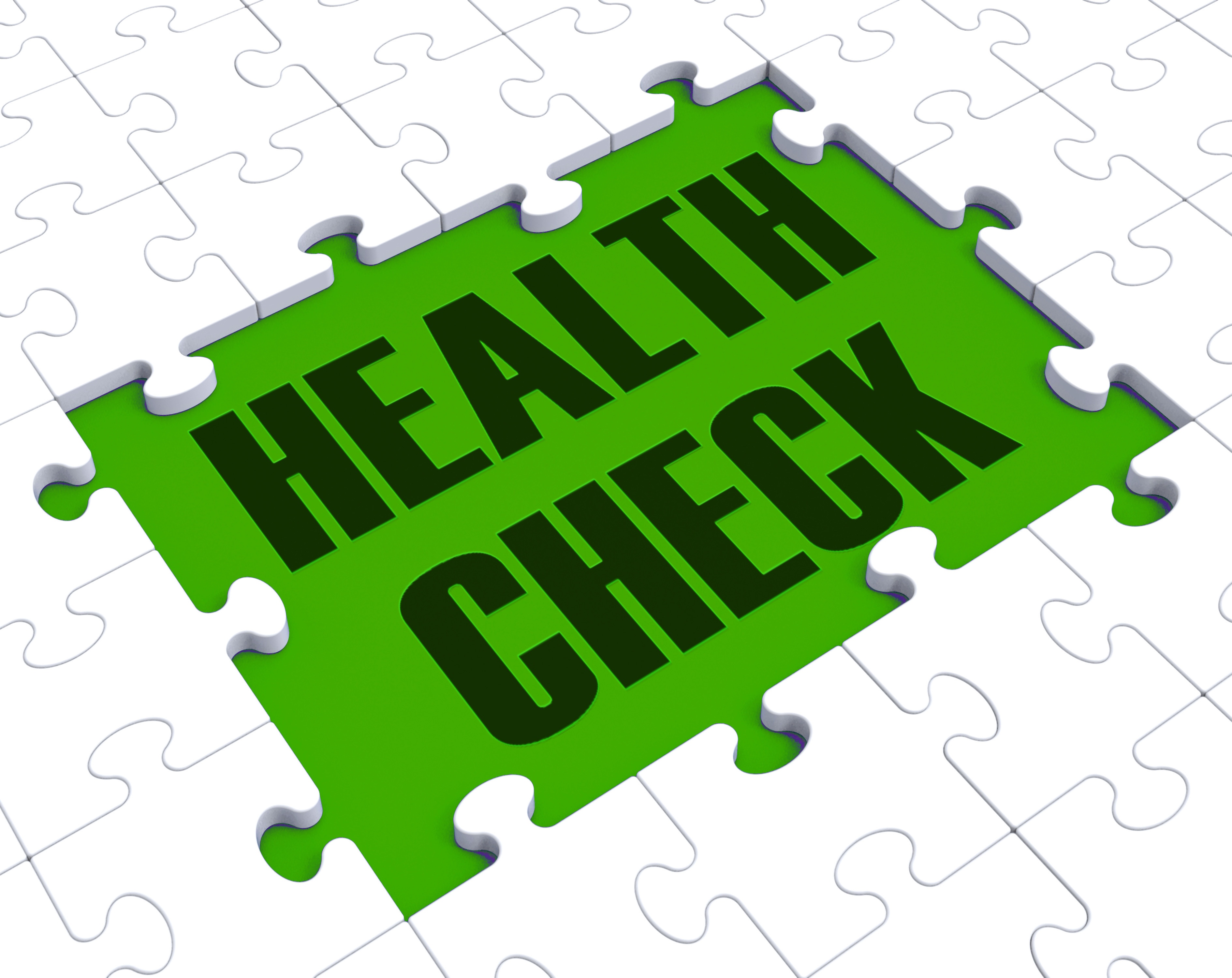Category: Paperwork
Stand Up (or Sit Down) and be Counted in the 2020 Census
July 29, 2020

The 2020 Census counts every person living in the United States and five U.S. territories (Puerto Rico, American Samoa, the Commonwealth of the Northern Mariana Islands, Guam, and the U.S. Virgin Islands.) The count, mandated by the U.S. Constitution in Article 1, Section 2, is conducted by the U.S. Census Bureau, a nonpartisan government agency, every 10 years. The 2020 Census will mark the 24th time that the country has counted its population since 1790.
In March 2020, each home was sent an invitation to respond to a short questionnaire online, by phone, or by mail. If you have already replied by answering the survey about yourself and everyone who was living with you on April 1, 2020, the Census Bureau is grateful. If you haven’t yet completed the questionnaire, your answers are still needed to add with information from other homes to produce statistics, which never identify your home or any person in your home.
Census invitations included an insert in 12 non-English languages, inviting people to respond online or by phone in their language. These languages, ranked by the number of limited-English-speaking households according to American Community Survey data collected from 2012 to 2016, include Spanish, Chinese, Vietnamese, Korean, Russian, Arabic, Tagalog, Polish, French, Haitian Creole, Portuguese, and Japanese. About 13 million households received invitations in both English and Spanish.
The Census Bureau also is providing video guides narrated in 59 non-English languages (including American Sign Language) to help people respond online and print guides written in the 59 non-English languages to help people complete the English paper questionnaire. Guides are also available in Braille and large print English.
You’ve Got Questions? The U.S. Census Bureau has Answers
Why is the Census Conducted?
The census provides complete, accurate, and critical data that lawmakers, business owners, teachers, and many others use to provide daily services, products, and support for you and your community. Every year, billions of dollars in federal funding go to more than 100 programs, including hospitals, fire departments, schools, roads, and other resources, such as Medicaid, Head Start, block grants for community mental health services, and the Supplemental Nutrition Assistance Program, also known as SNAP, based on census data.
The results of the census also determine the number of seats each state will have in the U.S. House of Representatives, and they are used to adjust or redraw congressional and state legislative districts, based on where populations have increased or decreased.
State legislatures or independent bipartisan commissions are responsible for redrawing congressional districts. The U.S. Census Bureau provides states with population counts for this purpose.
Over the next decade, lawmakers, business owners, and many others will use 2020 Census data to make critical decisions. The results will show where communities need new schools, new clinics, new roads, and more services for families, older adults, and children.
Is My Personal Information Kept Confidential?
Yes, the Census Bureau is bound by federal law to protect your information, and your responses are used only for statistical purposes. The Census Bureau does not disclose any personal information.
Who is Required to Respond?
Everyone living in the United States and its five territories is required by law to be counted in the 2020 Census.
What Questions are on the Census?
Go to https://2020census.gov/en/about-questions.html for the list of questions and an explanation about each question posed. Please note, there is no citizenship question on the 2020 Census.
How do I Determine Place of Residence?
You should count yourself at the place where you are living and sleeping most of the time as of April 1, 2020 (Census Day). For some, this is straightforward. But others—including college students, service members, and people in health care facilities—may have questions about where they should count themselves or how they should respond. Other circumstances can cause confusion as well, such as moving, having multiple residences, having no permanent address, living in a shelter, or living at a hotel or RV park. You can find answers to these questions at Official Residence Criteria for the 2020 Census.
Whom Should I Count as Individuals Living with Me?
If you are filling out the census for your home, you should count everyone who was living there as of April 1, 2020. This includes anyone—related or unrelated to you—who lives and sleeps at your home most of the time.
Count roommates, young children, newborns, and anyone who is renting a space in your home. If someone was staying in your home on April 1 and had no usual home elsewhere, you should count them in your response to the 2020 Census.
If someone such as a college student is just living with you temporarily due to the COVID-19 situation, they should be counted where they ordinarily would have been living on April 1, 2020.
What can Happen if I Don’t Respond to the Census?
By census law, refusal to answer all or part of the census carries a $100 fine. The penalty goes up to $500 for giving false answers. In 1976, Congress eliminated both the possibility of a 60-day prison sentence for noncompliance and a one-year prison term for false answers.
If you do not complete your form online, by phone, or by mail, the U.S. Census Bureau will follow up in person to collect your response.
Census takers started following up with nonresponding households on July 16. In subsequent weeks, the Census Bureau began opening additional census offices for enumeration activities. The majority of census offices across the country will begin follow-up work on August 11. All offices plan to conclude work by October 31.
In consideration of the COVID-19 pandemic, census takers will follow local public health guidelines when they visit households in person. They will wear face masks and will practice social distancing and other health and safety protocols when they work in neighborhoods. Learn more at Census Takers in Your Neighborhood.
Census takers are hired from your area, and their goal is to help you and everyone in your home be counted in the 2020 Census. If the census taker who visits your home does not speak your language, you may request a return visit from a census taker who does speak your language.
If no one is home when the census taker visits, the census taker will leave a notice of their visit with information about how to respond online, by phone or by mail.
If you respond online or by phone today, a census taker is less likely to have to visit your home to collect your response.
Go to https://my2020census.gov to complete your questionnaire if you haven’t done so already.
Complying with the call for you to respond to the 2020 Census may prompt you to reflect on your forefathers who may have contributed to the previous 23 times the census has been conducted since 1790. Or, if you are a first generation American, you may realize the importance of being part of a remarkable project that will identify national population changes in the past 10 years. At InsureYouKnow.org, you can file copies of family records, including birth certificates, passports, drivers’ licenses, and Social Security cards, as well as historical and current records for mortgage and insurance documentation relating to your place of residence.
From Home to Office in Record Time
July 13, 2020

From Home to Office in Record Time
In March 2020, out of concern about the coronavirus pandemic, many U.S. workers relocated from office buildings, campuses, and other locations to home offices—or more likely, to living room sofas, dining room tables, kitchen counters, and corner nooks in bedrooms. According to Gallup Panel data, nearly seven in 10 employees are still working remotely all or part of the time.
You may have hit the ground running to set up your home office months ago by securing the basics—a computer, a desk or table, a chair, WiFi or direct Internet connection, ability to access work applications, and sufficient lighting to work on your computer and to participate in live online videoconferences. If you are faced with continuing to work out of your home office for an indefinite period of time, taking time now to do an inventory of your home office environment may help you be more productive, comfortable, and focused.
Be More Productive
Make a realistic schedule so you can complete your top priorities during your peak times of productivity. Try to adhere to your regular work schedule by starting and ending your work day about the same time you would if you were physically at work, take your lunch and snack breaks at the same time each day, and consistently schedule and attend online meetings with your colleagues.
If you’ve experienced intermittent slowdowns or weak or spotty WiFi coverage in certain parts of your home, this could be a good time to upgrade. A new router could be especially helpful to handle the increased demands that come with multiple users in one household. Consumer Reports lets you know “How to Get a Stronger WiFi Signal” and offers tips for WiFi security.
If you are employed by a company with IT staff, consult with them to review your computer, printer, and WiFi setup as well as antivirus and anti-malware software to reach your maximum productivity.
You may have used videoconferencing apps to meet with clients and coworkers as well as family and friends before you started working at home during the pandemic. But, you may not have thought a lot about options, backgrounds, and presentation tips that can enhance your online participation that are provided in a Consumer Reports list of free videoconferencing apps.
If you are still part of a work team, let your colleagues know the best way to connect with you (for example, cell phone, email, text message, FaceTime, or videoconference) and the best times to reach you.
Update your team frequently about the progress of shared work, project deadlines, and other important tasks. Consider using free document creation apps like Google Docs or Microsoft’s Office.com and project management software to keep everyone up-to-date.
Take breaks throughout the day to increase your productivity and improve your circulation. Get up and walk to a different room in the house, get a glass of water, or do a few stretches. Set a reminder on your phone or, if you have a fitness watch, set up alerts to encourage you to move more.
Be More Comfortable
A chair that offers adequate back support with adjustable heights to allow you to change the positioning of your legs during the day and a footstool that can help prevent leg fatigue is the ideal choice. But, in lieu of investing in new furniture, make sure your task chair allows your feet to rest on the floor while your pelvis and lower back fit snugly against the back of the chair. If your chair isn’t adjustable, sitting on a cushion can aid you in being comfortable. Your task chair should support you while avoiding undue pressure on your spine. An ill-fitting chair that encourages you to slouch can result in an aching back and other health repercussions.
In evaluating your chair in relation to your desk or table, you want your arms to be bent around 90 degrees or up to 115 degrees when you place them on your keyboard, with your wrists in a neutral position and not resting on the keyboard. Relax your shoulders, with your elbows near your sides or on the armrests.
You may want to consider using a standing desk either all or part of your workday. Ergonomics experts approve of this option because it encourages users to change positions frequently from sitting to standing throughout the day. Consumer Reports provides a guide, “How to Choose a Standing Desk” to help you find options and price points to meet your home office needs.
Ensure that your workspace has enough electrical outlets to accommodate your computer, printer, and phone chargers to keep your workflow uninterrupted and fully charged.
Pay attention to the availability of natural light sources when setting up your home office and supplement them with artificial light if needed. You’ll feel the benefits of keeping your workspace bright and airy. Since you’re spending the majority of the day sitting or standing at your desk or table, having access to natural light can have an impact on your overall work performance, mood, and wellness. Harvard Business Review reported on a connection between natural light and employee well-being.
Instead of holding your cell phone between your shoulder and ear which may cause neck, back, and shoulder pain if you type while you talk on the phone, use earphones, earbuds, or a headset, or put your phone on speaker mode.
By using an ergonomic keyboard, you can place your wrists and hands in a healthier, more natural position than conventional keyboards to minimize discomfort and injuries like tendonitis. PC Magazine reviewed “The Best Ergonomic Keyboards for 2020” to use to avoid repetitive stress injuries.
Arrange your keyboard so it is centered to your body and if you use a mouse make sure it is within a natural reach to reduce muscle load and prevent strain.
When positioning your computer screen, place it at eye level so you are looking slightly down toward the center of the screen to prevent neck strain, dry eyes, headaches, and blurred vision. Give your eyes regular breaks from the monitor and force yourself to blink frequently when staring at the screen for extended periods of time. Don’t sit too close to the screen—your eyes should be an arm’s length away from the computer. Monitor arms can be used to align your screen but you also can use boxes or books to position your monitor.
View a YouTube video on office ergonomics for additional tips on setting up a comfortable at-home workstation.
Be More Focused
A quality pair of headphones is a simple way to help you focus on your tasks by reducing the noise you hear around you. Consumer Reports reviewed “Best Noise-Canceling Headphones of 2020” that can help you choose a pair that’s right for you. Search YouTube.com for “music for office work” and listen to background music conducive to working calmly in a distracting environment.
If possible, find a dedicated space with a door where you can work free from family activities and unnecessary distractions when you need to focus on deadlines, communication with clients or colleagues, and videoconferences. If you don’t have an option for a space with a door, try to set up an area off-limits to others for a few hours a day or use a foldable screen to indicate your need to minimize interruptions.
Establish a consistent schedule by starting and ending your day at the same time every workday to help you reinforce the separation between ‘work’ and ‘home.’ Establishing a routine also will help you manage your time so you are not working overtime or getting distracted with housekeeping chores during worktime.
Keep your shared calendar updated to ensure that others have accurate information about your availability.
In becoming more productive, comfortable, and focused, while you use part of your home for business, you may be able to deduct some of the expenses incurred when you file your income taxes. The IRS website says the home office deduction is available for both homeowners and renters and applies to all types of homes. Generally, deductions for a home office are based on the percentage of your home devoted to business use. So, if you use a whole room or part of a room for conducting your business, you need to figure out the percentage of your home devoted to your business activities.
At InsureYouKnow.org, you can keep track of your home office expenses, including how you use a percentage of your home to accommodate your business, that you’ll need in 2021 when you file your 2020 income taxes.
Managing Your Health While Avoiding COVID-19
June 29, 2020


Has your fear of coronavirus also induced a fear of going to your doctor for non-COVID symptoms, regular checkups, or recommended health screenings? By using telemedicine options or making sure your doctor’s office is observing safety guidelines for patients and staff, you can fearlessly visit your healthcare provider online or in person. By maintaining continuity of care, you can avoid negative consequences from delayed preventive, chronic, or routine care.
Telemedicine
During the COVID-19 pandemic, you don’t have to choose between medical care and social distancing if you use telemedicine options available from your provider’s office. Remote access also can help preserve the patient-provider relationship at times when an in-person visit is not practical or feasible.
Telemedicine can be a beneficial way to address mental health concerns for the majority of patients. Many patients are comfortable in their own home, scheduling is often more convenient, concerns with transportation and time may be reduced, and adolescents and young adults especially are comfortable using technology to communicate. Telemedicine also can reach patients in rural areas where behavioral health professionals are otherwise in limited supply. Remote access to healthcare services may increase participation for those who are medically or socially vulnerable or who do not have ready access to providers.
In Person
Safety guidelines for healthcare providers’ facilities from the Centers for Disease Control (CDC), the U.S. Department of Health & Human Services, and the World Health Organization include the following recommendations for waiting areas, patient examination rooms, labs, and restrooms:
- Provide supplies—tissues, alcohol-based hand sanitizers, soap at sinks, trash cans, and face masks.
- Place chairs at least 6 feet apart.
- If your office has toys, reading materials, or other communal objects, remove them or clean them regularly.
- Clean areas often with attention to frequently-touched surfaces including doorknobs, armrests, and handrails.
- Fully clean and disinfect exam rooms between each patient.
- Require the use of face masks by staff, patients, and accompanying visitors.
This issue of InsureYouKnow provides preventive health guidelines for the general adult population, based on the recommendations of recognized clinical sources such medical associations and government entities, including the CDC and the United States Preventive Services Task Force. An individual patient’s medical history and physical examination may indicate that further medical tests are needed. Guidelines may also differ from state to state based on state regulations and requirements.
Insurance Coverage
Some tests and vaccinations may not be covered by Medicare or by your health insurance plan, so it’s important to check on your specific coverage before obtaining them. Some insurance companies are currently not only waiving copayments and deductibles for COVID-19 related diagnoses and treatments, but also for telehealth and in-person visits for non-COVID concerns.
Screening Recommendations
- Routine Health Examination: every visit or at least, based on age and insurance contract, your healthcare provider will perform an exam that includes height and weight, calculation of body mass index, obesity determination, and blood pressure measurement.
- Abdominal Aortic Aneurysm: one-time screening with ultrasonography in men ages 65 to 75 years who have ever smoked.
- Breast Cancer: mammography and physician breast exam: annually for women ages 40 and over; breast self-exams: recommended monthly for women beginning at age 20.
- Cervical Cancer: Pap/Human Papilloma Virus (HPV) testing: for women ages 21 to 65, or starting 3 years after the onset of sexual activity, annually without HPV test to age 30; Pap test with HPV test every 3 years after age 30. Women who have had a hysterectomy or are over age 65 may not need a Pap test.
- Colorectal Cancer: for men and women ages 50 to 75 (in certain situations, also may be advisable from ages 75 to 85). Colonoscopy: for men and women, every 10 years. Other screening tests are: Fecal Immunochemical test: stool blood test, every 1-3 years, and CT colonography (an x-ray examination): every 5 years.
- Lung Cancer: annually with low-dose computed tomography in adults ages 55 to 80 years who have a history of heavy smoking and currently smoke or have quit within the past 15 years.
- Prostate Cancer: Digital rectal exam (DRE) and prostate specific antigen (PSA) test/discussion with physician: annually for men 50 and over (starting at age 40 for African-Americans).
- Cholesterol: Lipid Panel, including LDL: every 5 years, or more frequently based on results and risk profile for all men and women starting at age 20, or earlier if cardiac risk profile reveals high risk.
- Diabetes: Fasting Plasma Glucose or Random Plasma Glucose: men and women with high blood pressure, are overweight, or have cardiovascular risk factors; all others age 45 and over.
- Hepatitis B: screen persons at high risk for infection (such as geographic location, HIV positive, immunocompromised); screen pregnant women at their first prenatal visit.
- Hepatitis C: one-time testing of all adults 18 and all pregnant women during every pregnancy. People with risk factors, including people who inject drugs, should be tested regularly.
- Human Immunodeficiency Virus (HIV) Infection: screen in adults age 13 to 65 years and younger adolescents and older adults at increased risk; all pregnant women.
- Hypertension: blood pressure measurement every 1-2 years for all men and women, regardless of age.
- Osteoporosis: DXA (bone-density testing): baseline testing with follow-up intervals based on test results for women ages 65 and over, or starting at menopause if additional risk factors exist.
- Sexually Transmitted Infections (STIs): screen sexually active and those at high risk for syphilis, chlamydia, and gonorrhea and offer intensive behavioral counseling for adults who are at increased risk for STIs.
Immunization/Vaccine Recommendations
- Diphtheria/Tetanus/Pertussis: one time in place of Diphtheria/Tetanus Booster for men and women ages 19 to 64.
- Diphtheria/Tetanus: every 10 years for men and women up to age 65; single vaccination only for men and women 65 or over.
- Human Papillomavirus (HPV): one series of three vaccines for females between ages 11 and 26, and men, two to three doses depending on age at time of initial vaccination; age 19-21 if not already given.
- Influenza (Flu): annually for high-risk adults of any age with diabetes or heart, lung, kidney or immune disease; annually for all adults ages 50 and over; annually for any adult desiring immunization, regardless of age.
- Pneumococcal (for Pneumonia): one dose of PCV 13 and one dose of PCV 23 at least one year after PCV 13 for adults ages 65 and over who are at average risk, for high-risk adults of any age with diabetes, cancer, or heart, lung, or immune disease, Initial vaccination, with single revaccination 5 years later.
- Varicella Zoster (for Shingles): two doses starting at age 50; single vaccination for adults ages 60 and older.
Mental Health Awareness
- Physical Exam: Your primary care provider may give you a physical exam and ask you about your feelings, mood, behavior patterns, and other symptoms. Your provider may also order a blood test to find out if a physical disorder may be causing mental health symptoms.
- Coping with Stress: The COVID-19 pandemic is stressful for many people. Public health actions, such as social distancing, can make people feel isolated and lonely and can increase stress and anxiety. However, these actions are necessary to reduce the spread of COVID-19. Coping with stress in a healthy way will make you, the people you care about, and your community stronger. Know where and how to get treatment and other support services, including counseling or therapy in person or through telehealth services. Free and confidential resources can also help you connect with a skilled, trained counselor in your area.
- Domestic/Intimate Partner Violence: screening and counseling for interpersonal and domestic violence should be addressed immediately. The CDC provides a list of services to assist victims of violence.
Prescriptions
- Doctor visits and approvals as well as lab results are sometimes required in order to obtain or renew prescriptions.
Although health care news covered daily focuses on COVID-19, it’s important not to neglect other medical issues for which you should seek attention and advice from your healthcare professional.
At InsureYouKnow.org, you can save your medical files, lab results, and a list of prescriptions. You also can set up alerts to prompt you to schedule appointments to keep you on track to stay healthy.
On the Lookout for Free Money? Focus Your Search on Grant Opportunities
June 11, 2020

Individuals, communities, nonprofit organizations, and businesses continue to feel the ever-increasing effects of the COVID-19 pandemic. To help keep them afloat while dealing with diminished incomes and benefits, isolation away from friends, family, and colleagues, or facing an unknown future of returning to their previous careers or businesses, they can seek emergency financial assistance.
As the following selected links demonstrate, a variety of grantors are currently offering grants to assist in meeting financial challenges resulting in the continuing threat of COVID-19.
Grantspace by Candid provides a continually updated list of emergency financial resources including the following grant opportunities.
For Individuals
- The United Way, accessible at www.211.org or by dialing 211, provides a comprehensive list of available resourcesto locate food banks, to help pay housing bills, and to access free childcare and other essential services available on local, national, and statewide bases.
- Coronavirus Tax Relief: Economic Impact Payments is an IRS web page that lets non-filers enter payment information and others to check on the status of their stimulus payments.
- Economic Impact Payments: What you need to know is a FAQ page created by the IRS to answer questions about stimulus payments.
- Restaurant Workers’ Community Foundation COVID-19 Relief Fund provides emergency funding for those employed by or own restaurants or bars facing unforeseen expenses not covered by insurance.
- Americans for the Arts Coronavirus Resource and Response Center includes a list of funding/grants resources.
- COVID-19 Freelance Artists Resources is an aggregated list of free resources, opportunities, and financial relief options available to artists of all disciplines.
- Creative Capital Arts Resources During the COVID-19 Outbreak is another list of financial resources for artists working in all disciplines.
- Freelancers Relief Fund grants financial assistance of up to $1,000 per freelance household to cover lost income and essential expenses not covered by government relief programs.
- Student Relief Fund lists resources for college students in need of support due to campus shutdowns caused by COVID-19.
- Artist Relief lists grants for artists facing dire financial emergencies due to COVID-19 in the U.S.
- Artist Relief Project publicizes grants for any artist in any discipline whose income has been impacted by COVID-19-related cancellations and closures.
- American Guild of Musical Artists (AGMA) Relief Fund provides support and temporary financial assistance to members in need.
- Equal Sound Corona Relief Fund for Musicians who have lost income due to a cancelled performance as a result of the COVID-19 outbreak.
- New Music Solidarity Fund offers emergency funds to support freelance artists in the new/creative/improvised music community.
- Dramatists Guild Foundation Emergency Grants provides emergency financial assistance to individual playwrights, composers, lyricists, and book writers in dire need of funds due to severe hardship or unexpected illness.
For Communities
- GrantWatch promotes an Opportunity for USA Organizations to Raise Funds to Benefit Communities Impacted by the Coronavirus (COVID-19).
- Community Foundations Nationwide Launch Coronavirus Relief Efforts is a full listing of more than 500 U.S. community foundations in all 50 states, plus the District of Columbia, that support those affected by COVID-19—directing critical relief to local nonprofits and partnering with local governments and health organizations to help contain its spread.
For Small Businesses
- Small Business Administration Disaster Assistance Loans provide economic relief to businesses that are currently experiencing a temporary loss of revenue.
- SBA Paycheck Protection Program – An SBA loan that helps businesses keep their workforce employed during the COVID-19 crisis.
- GoFundMe Small Business Relief Fund helps small businesses that have been affected by the COVID-19 pandemic and empower their communities to rally behind them. GoFundMe has partnered with Yelp, Intuit QuickBooks, GoDaddy, and Bill.com to provide small business owners with the financial support and resources needed to continue running their businesses during and after the coronavirus crisis.
- Facebook Small Business Grants Program – Facebook is offering $100M in cash grants and ad credits for up to 30,000 eligible small businesses in over 30 countries where it operates.
- Financial Assistance for Small Business is a list of programs providing financial assistance to small businesses compiled by the U.S. Chamber of Commerce Foundation.
- Opportunity Fund Small Business Relief Fund supports eligible small businesses, especially those run by women, people of color, and immigrants, impacted by the COVID-19 crisis.
For Nonprofits
- Funding for Coronavirus (COVID-19) shares information about philanthropy’s response to the pandemic
- CARES Act: How to Apply for Nonprofit Relief Funds is a guide created by Independent Sector.
- Loans Available for Nonprofits in the CARES Act is a chart from the National Council of Nonprofits providing details on loan options, eligibility criteria, terms, and application information.
- State Public Policy Resources on COVID-19 is the National Council of Nonprofits page for nonprofit-specific materials from state officials and useful resources on what states are doing in response to COVID-19.
- Grantmakers Concerned with Immigrants & Refugees COVID-19 Resources is an aggregated list of resources for nonprofits working with immigrants & refugees.
In general, grant opportunities and corresponding applications adhere to strictly announced deadlines and requirements so potential grantees need to submit proposals on time and meet the specific provisions outlined in each grant’s description. At InsureYouKnow.org, you can save your documents and files relating to grant applications and set up reminders to alert you to keep track of timelines for submitting grant applications and to check on grants awarded.
Does Life Insurance cover the coronavirus?
May 18, 2020

The checkbox on new hire paperwork about life insurance, may start to seem a little more important during the days of COVID-19. For many it was an obvious choice when the employer was giving something for “free.” Professionals have a safety net policy to help their family members for a short time. For consultants, self-employed and business owners, life insurance was a security blanket. A new stress has emerged as the media has suggested that the coronavirus cause of death would not be covered – this is not a true statement.
The most common causes of death – heart disease, cancer, and accidents, are still present and affecting all age groups. 74% of deaths in America stemmed from 10 causes, and the coronavirus may make it on the top-10 list. The CDC reports that about 647,000 Americans die from heart disease each year, while nearly 600,000 people die annually from cancer. Currently the increasing numbers of people affected by the virus are resulting in changes in all kinds of data. Insurance companies will be a valuable additional source of data as they collect this information. The Yale School of Public Health recorded an estimated 15,400 excess deaths in the United States from March through early April, twice as many as were publicly attributed to COVID-19. Life insurance companies are receiving higher numbers of applications as end-of-life conversations and preparedness are emerging as necessary, not taboo topics.
Reviewing your Life Insurance coverages
This is a good time to review the safety net or security blanket policies that you may have. You will come across many different types of life insurance policies when you start shopping––and not all of them are available from every company.
When you narrow down a policy, reviewing the type of insurance you have against your current lifestyle and needs may be advantageous. New applications are being accepted, and many companies have extended the time needed to complete the medical exam to 120 days, or 4 months. News9, an Oklahoma based news outlet, reported that individuals shopping for new policies may notice that e-signatures are now acceptable.
According to Glen Mulready, Oklahoma Insurance Commissioner, older individuals may have more trouble finding coverage.Insurance companies view older applicants as high risk and with the current economy, some have decided to limit exposures. Fortunately, there are a variety of life insurance companies, so there is a policy type for all. Finding an agent that is affiliated with multiple providers may be advantageous and save time when reviewing rates.
Accessing your Life Insurance
Upon your death, your next of kin will need to make a claim to access the life insurance policy or policies that have been created for you. These people may or may not be your beneficiary. There are three steps that need to take place before any money is released.
- Locating the policy. This involves finding the name of the company or companies that you purchased life insurance from. The NAIC, has an online life insurance policy locator service – https://eapps.naic.org/life-policy-locator/#/acknowledgment
- Connecting with the agent. The agent from the company will assist with the timeline process, provide the policy number, and necessary forms to be completed.
- Completing the Paperwork. Fill out the forms, order the death certificate and mail the forms to the company without delay. Often there is a choice to pick a lump sum or installment payouts.
Typically, the insurance money is released within a few weeks––but there are exceptions. According to Marketwatch, an insurer might deny a claim for a coronavirus death if the policyholder submitted an inaccurate or incomplete application. With this in mind, it may be worth spending a few minutes reviewing your paperwork for gaps.
As you work through the process of applying for your life insurance, reviewing your coverages or submitting a claim for a loved one, document all your findings and notes on InsureYouKnow.org – an online information storage site that allows you to access documents, and files remotely relating to your affairs. There are various levels of access to allow your family members, caregivers or business associates insight into the documents, as needed. There is even a reminder feature to help you update or revisit the policy from time to time.
Mayday…Mayday….
April 29, 2020

Created as a distress signal in the 1920s, the term mayday is utilized by ships and aircraft to communicate emergency or life-threatening situations. When officer, Frederick Stanley Mockford thought of the word, the pandemic crisis of 1918 and the end of the First World War was not even a decade past.
Fast-forwarding 100 years to May 2020 – the coronavirus pandemic is very much part of everyone’s life and lifestyle. In a matter of weeks, the way the world looked at itself was turned around, and some questions come to mind….
Is our planet in a state of Mayday?
Depends on who and what you are referring to. The environment is thriving, the oceans are cleaner, and the animals are not scared and are coming out into many city dwellings. The seals are basking on the beaches where humans were. The water, and air is cleaner as the pollution subsides. The planet called Mayday, and now the humans are. However the story is not the same for mankind. Humans are dying – living in fear of contracting the virus and staying indoors and isolated. The economy is in a state of flux, no one wants oil – a once huge commodity. The luxuries of stock trading and vacations are now replaced with the luxuries of accessing food, and human touch.
Is our country in a state of Mayday?
The way the world worked has changed. Our fast paced lives have in some ways slowed down as transportation needs have reduced, and the working world has shifted focus. Going into work, going to school, errands, and shopping have been restricted by both private and public entities. Federal and local governments are rapidly reviewing information and making life-changing decisions about access to healthcare, food, and the outdoors. In some ways the Mayday call has already been sent from the public sector to the private. Our country has forced its community to ramp up the use of technology for communication. The internet is now a necessity for video-meetings that are replacing work conferences, family birthday gatherings and learning. Remote payments instead of cash exchange for services. And the state of the unknown has created an undercurrent of anxiety.
Do you need to signal Mayday?
Checking in with yourself about your needs is paramount. Where you are at emotionally, physically, socially, financially impacts your relations and ability to function with the new day to day. There is little control. Access to food, loved ones, work and our old lifestyle can bring up feelings of anger, resentment, and fear. Reaching out for support or connecting with your community could stop your need for the Mayday call.
InsureYouKnow.org – an online information depository allows those that receive your Mayday call, this month, this year, this decade to access documents, and files remotely relating to your affairs. Whether photographs to relive memories, financial information to cover debt, or your resume for a possible job opportunity. There are various levels of access to allow your family members, caregivers or business associates insight into your documents – as needed. There is even a trusty reminder feature to help you remember that it’s time to update.
In Case of Pandemic…
April 20, 2020

We all have or should have In-case-of-Emergency documentation, but did we ever think about in case of pandemic? The current situation can make a difference in the way that our emergency plans work. There are many lists and suggestions of “in case of emergency” documents that everyone should have together, but in our current COVID-19 pandemic situation, there may be areas that need to be reviewed or even created.
With the unknown of when the pandemic will end or if we are in the peak of the homebound regulations, the question of access has become a source of anxiety. Below are three areas of access to consider when we are in pandemic.
Access to Resources
Some of our resources are easier to access than others. Groceries are the ones that we are hearing about on the news – we can’t get the basics – milk, eggs, toilet paper, hand sanitizer. There are grocery delivery services, volunteers in the neighborhoods and local nonprofits that are currently marketing their services – facebook, nextdoor and even conversing with neighbors or friends can uncover options.
Our safe deposit box. The place that we have been keeping our trusty resources are in some ways inaccessible. Our financial institutions may still be open but are you able to get to them safely given the WHO recommendations. Many locations are having special hours for seniors and high-risk patrons.
Many people in the workforce have experienced changes in the work environment. From job insecurity, furloughing, limited hours – to work from home, working in a new location or role. Financial resources may be reduced, and not being able to use your computer, access your desk drawers, use the same extensions to reach people can be tough.
Action: Have you been able to reorient yourself to the new resource allocation? Is there something that is missing that you wish you could have to make your life just a little bit easier?
Access to Care
Our healthcare routine is currently disrupted. Getting to the doctor’s appointments, picking up prescriptions, and going to therapy or residential care facilities is not always possible.
Many providers have been communicating how you can access them if there is a need – often by telemedicine routes. Local or satellite offices are consolidating care in a central location and many doctors are not available every day.
Action: Is your doctor only conducting telehealth visits? If so – the telehealth visits often need technology set up on computers or phones, and walking through the steps now instead of during the appointment can be advantageous.
Access to Loved Ones
Technology is our friend. We may not live with our top-ten people, or even have another person in our home, but phone and video chat have given us the opportunity to access our loved-ones lives in their homes.
If you do need to go to the hospital, a loved one may not permitted to accompany you into the triage area. Your next of kin or preferred person may be high risk and it may not be safe for their health, to come with you. If you need to stay in the hospital, whether for a birth of a child, broken bone, or in the ICU – your loved ones will not be able to stay or visit. These are challenges that are new to all of us. Health care teams are working to help you connect to your loved ones through ipads and phone conversations.
Action – Have a list of people with their phone numbers and consider who would be able to come with you to the doctor office or hospital that is not high-risk.
As you start putting your new “pandemic” documents and plan together consider using InsureYouKnow.org – an online information-safe, as a place to store them. This product gives you the ability to access documents, and files remotely – or from the comforts of your own home. There are various levels of access to allow your family members, caregivers or business associates insight into your documents – as needed. There is even a trusty reminder feature to help you remember that it’s time to update.
Americans’ Real ID
March 2, 2020

Who are you? Whether verbally or in written form – Many of us respond to our given first name, family last name or nickname. Over the years – governments, institutions and communities have desired proof of identity: usually in a card form. Children have library cards, and student IDs, adults have state-issued ID cards or licenses, and pets need to be registered as of 1994, the Domestic Animals Act.
In 2005 the US government announced that they want everyone to have standardized identification for federal access – and to fly. Called the Real ID, it is an attempt to have common guidelines nationwide since ID cards have been state issued and have varying documentation. The Real ID cards and licenses will be identifiable by the star. The process of encouraging Americans to update their ID cards has involved state-supported marketing via websites, videos, tv and radio ads, and paper mail – and news media does not believe that everyone will be carrying the necessary ID card in October 2020. As the October deadline approaches, expect the communication to increase.
Though the Real ID is the current identification to be highlighted in the United States – there are international forms of identification including:
Passport. Proves your identity overseas. Since these are standardized by country, those that travel frequently may have several of the books. Each country has limitations on the number of years individuals can have a passport expires, and that allows for governments to update information such as name, location and pictures.
Social security card. In November 1936, the first round of social security numbers were issued in the United States. In conjunction with the post office, the social security cards gave identification to people living in geographic areas. This is a way to identify tax collections and subsequently benefits to be paid out. As individuals begin working – and the social security number is a requirement for paperwork – the 10-digit number commits to memory. Social security cards are required to verify identity for work and federal purposes in America, though internationally – alternative numbers are cards are used for similar purposes.
Birth certificate. A birth certificate shows the date, location and parents to which you were birthed. An international form of identification – essentially a proof that you were born. For those born outside the United States, these can be harder to obtain – but for US citizens an application at the state you were born is a seamless process via the Office of Vital Records
Identification methods surpass country or government policies. Whether we look to the future with facial recognition technology, or the past with fingerprinting, the need to know “who you are” is an essential part of life. Store copies of your identification on InsureYouKnow.org. As a safe place to store all the information in case you need to access it remotely – or from the comforts of your own home. While it may not help you at the airport, they will be the elements you need to apply for your Real ID before the October 2020 deadline.
Building Trust
February 25, 2020

The English language is such that for every rule, there is an exception or a way to break the rule and still be understood. Childhood rhymes or mnemonics are created to help memorize the rules: “i before e except when c…. “ (friend vs. receive),the letter “q” is always followed by “u” (queen, quilt), except for 78 words that came to English from other languages like Qatar and qi. Other confusions include words that are spelled the same, pronounced the same but have different meanings based on context. Examples – orange and orange, wave and wave, bat and bat. The name for this is a homograph.
A homograph that is particularly relatable to my work is the word trust. Trust can be used as verb or noun and the definitions are: 1. Trust – to have faith/confidence in truth, and 2. trust – a legal arrangement usually due to money. Interestingly you cannot have a legal trust, without having trust.
There are many layers in the formation of a trust:
Trust the process. You are not the first person to create a trust – and there are friends, family and google to help you through. There are step by step guidelines to be followed and they vary by state. In order for your trust to be a legal agreement, it needs to follow the checkboxes. These include taking stock of your assets (read my blog post on this step) and thinking about the people in your life that would be included, excluded and notified about your trust. To hold your hand and walk you through the process – an advisor can be the first formal step.
Trust the advisor. Find someone you like and that you feel like you can relate to. How do they organize the meeting? Where do you meet and what is their demeanor, and the personalities of the team? We all have preconceived expectations about what we want, and we are investing our energy, money and intimate details with the advisor. The advisors have varying expertise and may be able to assist with other to-do items as well as the trust.
Trust yourself. It is easy to second-guess or be unsure of your decisions and choices as you put together the documentation. This is a legal document and though the steps can be completed in a few days or weeks, the peace of mind when this is done right will last your lifetime. Trust yourself to complete the tasks and create a trust is yours. You can be guided by the process, standards and the advisor but ultimately this is your trust and can be notarized and funded on your timeline and comfort level.
Trust InsureYouKnow.org. It’s a safe place to store all the information in case you need to access it remotely – or from the comforts of your own home. The documents are password protected and utilize Amazon cloud encryption to secure and protect each password encrypted account. Your password is not known to the site. Only you, or someone you share the password with, can ever access your account.
Regaining trust – whether it is the confidence or the legal agreement kind – takes work and immense heartache, so getting things right the first time is advantageous to your mental, physical and financial health.
Hindsight is 20/20
January 23, 2020

The idiom – Hindsight is 20/20 – originated in the early 1900s as a way to “describe the fact that it is easy for one to be knowledgeable about an event after it has happened.” We have a New Year’s Day every year, and with that comes the endless resolutions and promises to make changes in our lives. Birthdays are another reflection time. We are fifteen days into the year 2020 and perhaps making the tweaks now can help the resolutions to be successful.
In our lives we have plenty of ways to be resourceful and organized, yet we all fail to cover all the areas. Some of us thrive at organization in the workplace, but have a stack of papers at our home. Others have a knack for fitting in workouts, but are unable to connect with family and friends. Then when a crisis or need happens – we become frantic and anxiety creeps in.
Making those appointments to have 20/20 in 2020.
- Physical Health Appointments. There is not a one-size fits all doctor for our physical health needs. And in 2020 – we have choices. Where do you want to go – a family practice or a larger organization with multiple providers? Do you have a preference in the type of philosophy they have? The Primary Care physician is the doctor that can hold all your records, but they cannot assist with everything. Dentists, Chiropractors, Optometrists, and the numerous specialists for every ailment exist – but making the appointment, preparing questions for the provider, and actually showing up are achievements. According to a 2016 study, the average yearly no-show rate for primary care and specialty medical appointments is just under 20 percent! Post-appointment, request a copy of your records so you can review the action items.
- Financial Health Appointments. We may receive paper statements in the mail about our accounts, investments and paperwork for tax purposes. Many of these can be converted to online-statements which save the environment and clutter the email box versus the kitchen counter. Consumer Action, revealed that depending on the account category, 45-74 percent of respondents said that they choose paper over electronic notifications for insurance, utilities, medical, mortgages, credit cards and property taxes. Whichever method you select – are you clear about what is happening in your financial health. Are the accounts and investments working towards your 2020 goals? Making an appointment with a financial advisor, stopping into the branch to meet with the banking specialist, or connecting with a resource provided by your workplace will help you review your health in this area.
- Mental Health Appointments. The most common responses to “How are you?” are “Good” “Fine” “Okay” but when we dig deeper there are areas of unrest in our lives. Mental wellness doesn’t have to mean seeing a counselor or therapist. Setting aside time, or making an appointment to do something that “brings you joy” can prevent the need to see a therapist. And if you do need a specialist: phone counseling, online chat, individual, group therapy and medications are available to meet your needs.
- Spiritual Health Appointments. The National Center for Biotechnology Information states that “spiritual health creates a balance between physical, psychological and social aspects of human life” Finding the area or time to create the balance in life is challenging, but the label of religion or spiritual does not need to hinder the opportunity to fulfill this need.
Your calendar will be full from all the preparations and appointments, but your world and your significant others will see a drastic difference in who you are in the year 2020. Resolve to make an appointment this quarter with a provider in each category. After the appointments, consider uploading all your receipts, reports, documents, and memories onto InsureYouKnow.org. It’s a safe place to store all the information in case you need to access it remotely – or from the comforts of your own home. You will have 20/20 vision instead of hindsight.
